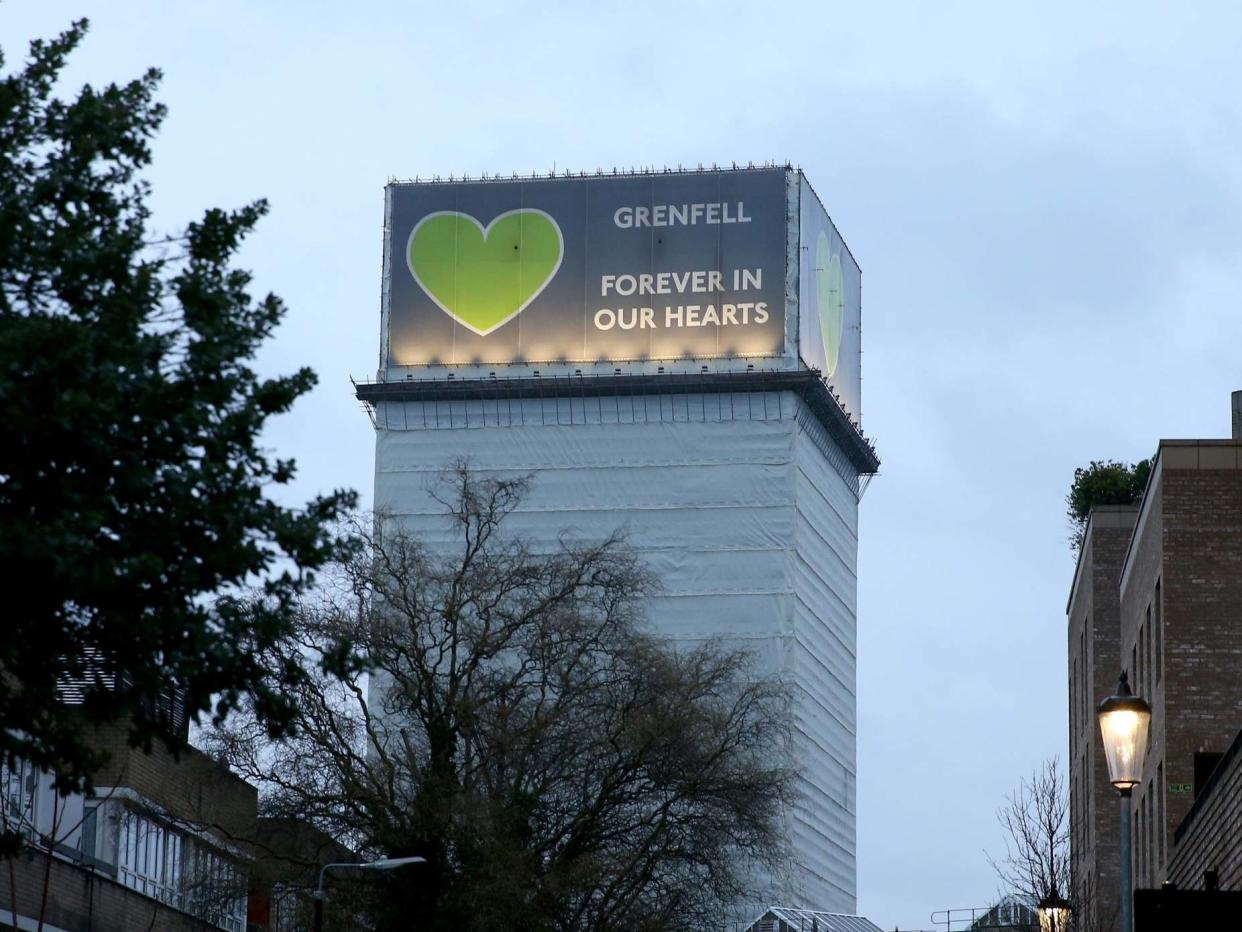Grenfell Tower fire: What to expect from the second phase of the inquiry

The second phase of the public inquiry into the Grenfell Tower fire has begun as investigators search for an “honest and complete account” of the circumstances and causes of the disaster.
For more than two years, the inquiry has sought to establish the facts of what happened on the night of the fire, which killed 72 people in June 2017, in order to prevent future accidents.
In October last year, the report for phase one of the inquiry criticised the London Fire Brigade for “serious shortcomings” in its response to the fire and found that cladding on the tower did not comply with building regulations.
It determined that the cladding was the “principal” reason for the rapid spread of the flames, which were sparked by an electrical fault with a fridge-freezer.
Sir Martin Moore-Bick, the chair of the inquiry, has said there are “many complex questions” that still need to be answered in the investigation’s second phase.
How will phase two differ from phase one?
Phase one of the Grenfell Inquiry established what happened on the night of the fire, while phase two will attempt to explain why it happened.
It will consider how the high-rise block came to be wrapped in flammable cladding and call witnesses involved in the refurbishment of the tower.
Although Grenfell was built in 1974, it was significantly altered between 2012 and 2016, most significantly when combustible aluminium composite material (ACM) cladding was added over its concrete exterior.
The lead architects for the main refurbishment, Studio E, and the firm Rydon, the lead design and building contractor, were called to deliver opening statements on Monday, along with Harley Facades Ltd, a cladding subcontractor to Rydon.
The inquiry wants to establish the “precise reasons” why the cladding was added to the building, according to the phase one report.
Phase two will be split into seven modules, which will attempt to answer how robustly cladding products were tested and how residents’ complaints to the tower’s management were dealt with.
More than 93,000 documents have been disclosed so far for this phase, which is due to run until June 2012, the inquiry said.
Who is Benita Mehra?
The second stage of the inquiry comes just days after a newly-appointed member of the panel resigned over links to a charitable arm of the firm that supplied Grenfell’s deadly cladding
Benita Mehra had been appointed as an expert panellist but tendered her resignation to Boris Johnson, the prime minister, on Saturday following pressure from victims’ families and campaigners.
It was revealed that Ms Mehra is an immediate past president of the Women’s Engineering Society, which, according to the its website, received funding last year from Arconic – the supplier of the cladding – for an apprentice conference.
Michael Mansfield QC, a lawyer representing victims of the fire, said there had been “a stunning silence” from Mr Johnson and the Cabinet Office over the resignation of Ms Mehra.
Mr Mansfield said on Monday there had been “not a word about whether there is going to be a replacement” for her on the panel.
What do survivors’ groups want from phase two?
Survivors’ groups have called for phase two of the inquiry to focus on who is to blame for the “devastating refurbishment”, with Grenfell United saying they hope it will “expose the people and organisations who put profit and greed” above safety.
The group, which represents bereaved families and survivors, added: “Those responsible continue to deflect blame and we have to suffer their persistent refusal to accept accountability for the preventable loss of life.
“They must now be held to account.”
Grenfell United has also called for criminal charges to be brought against anyone found responsible for the deaths.
The Metropolitan Police, which is conducting its own investigation into the fire, has said possible criminal charges including gross negligence manslaughter, corporate manslaughter and breaches of the Health and Safety Act are being considered.
However, any decision on charges will not be announced until the public inquiry has concluded.
Richard Millett QC, counsel to the inquiry, has accused those involved in the refurbishment of showing “no trace of responsibility” for the disaster.
“With the sole exception of RBKC (Royal Borough of Kensington and Chelsea), not a single core participant involved in the primary refurbishment of Grenfell Tower has felt able to make an unqualified submission against its own interests,” Mr Millett told the inquiry on Monday.
Additional reporting by PA
Read more
Grenfell Tower inquiry panel member quits after cladding link exposed
‘Deadly’ tower blocks have no plans to remove Grenfell-style cladding
London Fire Brigade ‘too slow to learn lessons’ from Grenfell tragedy
Grenfell firefighter who revoked ‘stay put’ policy made LFB chief
London fire chief resigns after Grenfell controversy
Grenfell fraudster who claimed he helped victims flee flames convicted


